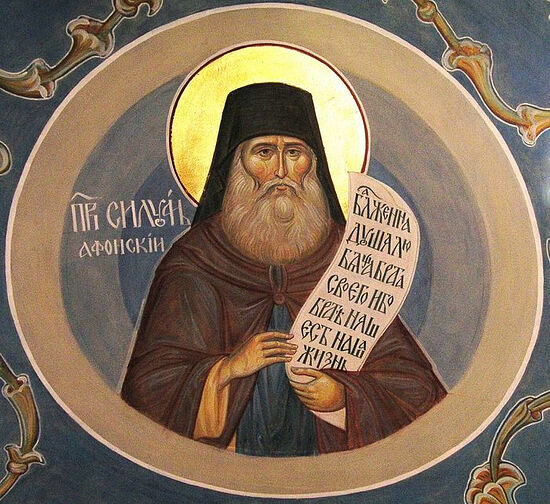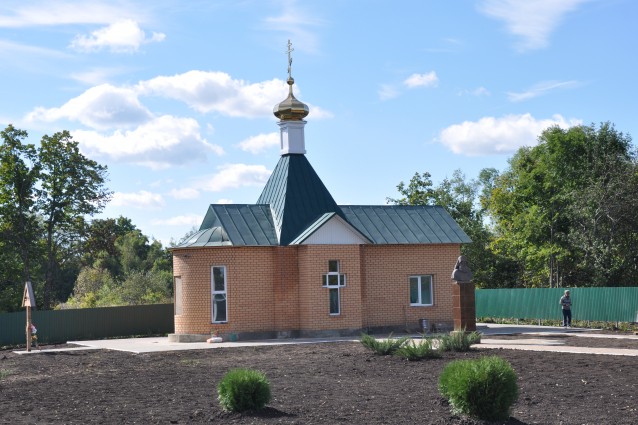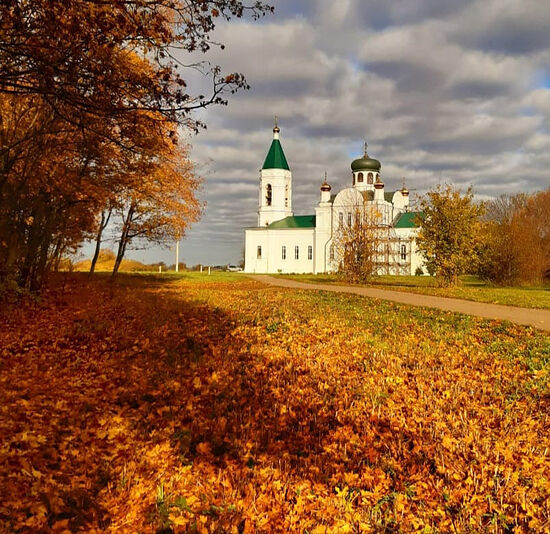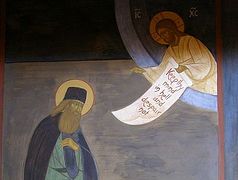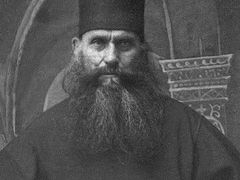Once, over a century and a half ago, the village of Shovskoye [now in the Lebedyan district of the Lipetsk region.—Trans.] was populous, and the future famous Russian saint lived in it—the Venerable Silouan the Athonite. Today this place is only occasionally visited by pilgrims, and on the great feasts the faithful from the surrounding villages gather at the church where the saint was probably baptized. Priest Andrei Zadorozhny, rector of the Church of the Nativity of Christ in the village of Shovskoye, tells our readers about the life of the community today.
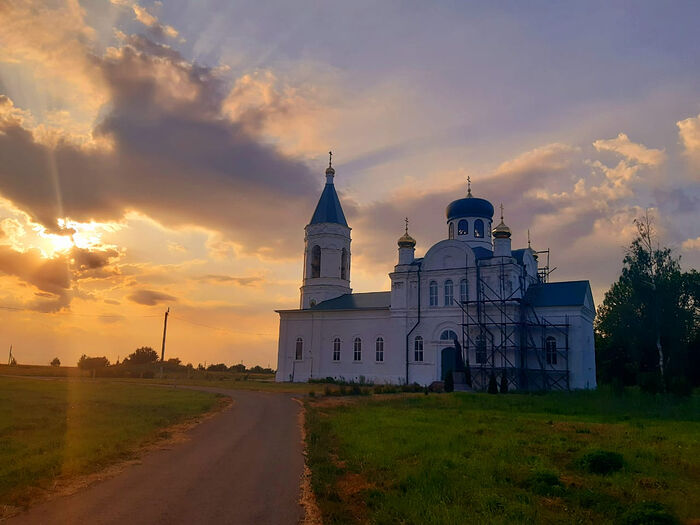 The Church of the Nativity of Christ in the village of Shovskoye
The Church of the Nativity of Christ in the village of Shovskoye
—As far as I know, the Church of the Nativity of Christ in Shovskoye was closed in the Soviet era and then ravaged. And despite its connection with the famous saint, this church is still unknown to many…
—For the anniversary, our historians published a book about Shovskoye. Andrei Anatolievich Naydenov [Head of the State Directorate for the Protection of Cultural Heritage of the Lipetsk Region.—Ed.] and others helped a lot in the search for information. The book came out in a limited number of copies.
The church in the village of Shovskoye was first mentioned in 1676. Then a wooden church was built. But, as a rule, wooden houses and churches in our region stand for 100 years. Thus, in the mid-eighteenth century a new wooden church was built here, and a century later, in 1865, a stone one appeared. The rector at that time was Priest Mikhail Chernigov, who put a lot of effort into building the church. The landowners who lived in the village at that time invested in the construction as well.
The consecration of the church coincided with the birth of the future saint, whose secular name was Semyon (Simeon) Ioannovich Antonov. And although we have no evidence that he was baptized in this church, but it is very likely—other churches were situated six to twelve miles away from the village.
—The stone church was not built on the site of the wooden one, was it?
—Today there is a chapel on the site of the altar of the old wooden church, and a cemetery is nearby. In 1892 a parish trust was opened, headed by Colonel Vasily Alexeevich Durasov. It had fourteen trustees. They catered to all the needs of the church. Through their efforts a bell weighing 327 kilograms was purchased, but unfortunately it has not survived.
—Has any information about the Antonov family survived?
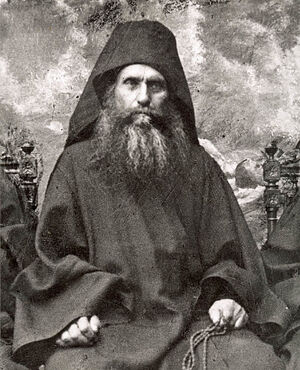 St. Silouan of Mt. Athos —The village was populous at that time. It is known that the Antonovs were carpenters. The Venerable Silouan recalled how he and his brother worked without contracts for a local landowner. Residents of the neighboring village of Volchye even called them “tea-drinkers”—maybe because they were often in the landowner’s house and could drink tea with him. Semyon was an ordinary rural guy who loved open-air merrymaking and played the harmonica.
St. Silouan of Mt. Athos —The village was populous at that time. It is known that the Antonovs were carpenters. The Venerable Silouan recalled how he and his brother worked without contracts for a local landowner. Residents of the neighboring village of Volchye even called them “tea-drinkers”—maybe because they were often in the landowner’s house and could drink tea with him. Semyon was an ordinary rural guy who loved open-air merrymaking and played the harmonica.
—Is anything known about his parents other than their occupation?
—Unfortunately, virtually no information survives. Even the saint’s mother’s name is not known for certain. Metropolitan Arseny of Lipetsk and Zadonsk serves the litia after every Liturgy, at which he commemorates Ivan (John) and Solomonida—there is a version that the saint’s mother bore this name. According to another version, her name was Stefanida.
—And what about their house? Is it open to the public?
—It has been restored, and, although it is officially called a “House Museum”, there are no permanent staff there. We meet pilgrims, and sometimes those who want to visit the village contact the Lebedyan Cathedral.
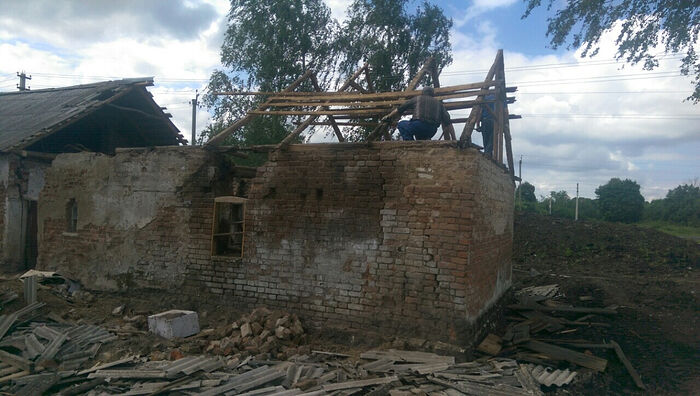 The house of St. Silouan before its restoration
The house of St. Silouan before its restoration
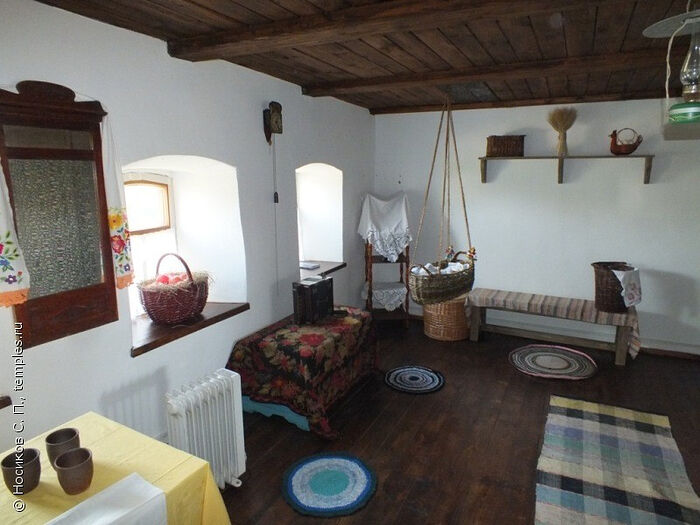 Interior of the House and Museum of St. Silouan the Athonite in Shovskoye. Photo: S. P. Nosikov / Temples.ru
Interior of the House and Museum of St. Silouan the Athonite in Shovskoye. Photo: S. P. Nosikov / Temples.ru
The house is divided into two parts: the first one is a monastic exhibition [monastic vestments, photos of St. Silouan, the Athonite St. Panteleimon’s Monastery where he struggled.—Ed.], and the second is an exhibition on peasant life, household items and utensils, the Russian stove, etc. There is a holy corner in the house, and a cradle for a baby is suspended from the ceiling. And many visitors on entering this house immediately recall their childhood. They even say that their cradles used to hang the same way (smiles).
Unfortunately, his and his parents’ personal belongings have not survived. After all, he became famous on Mt. Athos, but in his native village, as we know, he was regarded as an “ordinary” man. Few locals had known his name prior to his canonization. They just knew that a saint used to live here and nothing more.
—When did you first hear about St. Silouan’s birthplace?
—I heard about it as a student. I was on holiday with my relatives in the Crimea, and at the Bakhchisarai Dormition Monastery I heard a sermon by Abbot Silouan (Makei), in which he said that he was born in the Lebedyan district. My mother comes from Lebedyan as well. And until then I didn’t know that there was such a place very close by (smiles).
—There is also a chapel-church in honor of St. Silouan in Shovskoye, right?
—Yes. It stands on the spot where presumably his hut used to stand. When St. Silouan came back to Shovskoye as a monk, he could no longer be among laypeople in his parents’ house. And he built himself a hut nearby.
By word of mouth the villagers passed on stories of how, when they were children, they ran to a kind monk who used to tell them about God. In the Soviet era it was not customary to talk about that, but now people remember it willingly.
—I heard that the saint’s parents are most likely buried in the nearby cemetery…
—Yes, there is an old cemetery where there are almost no crosses and monuments left. There are only a few tombstones left without dates. It is known that those who died before 1906 were buried here. Later burials, starting from 1906, can be found at the new cemetery. In order not to lose this place we decided to mark the site of the cemetery and set up a memorial cross and a sign indicating that the saint’s parents are most likely interred here.
—Have there been any attempts to search the archives to find their graves?
—We will try. Our village used to be part of the Tambov province. Perhaps we should search in local archives. And earlier the village used to be part of the Ryazan province—we will try to look there as well.
—It would be interesting to know about how the parish was opened…
—It was very difficult. Three schoolteachers walked around the village collecting the signatures of villagers in order to secure the opening of the parish. They also asked for help from the Metochion of St. Panteleimon’s Athonite Monastery in Moscow. Back then, churches were rarely restored in towns and cities… But in 2011, the first Divine Liturgy was celebrated.
 Priest Andrei Zadorozhny —Yes, the Lord helps in such matters…
Priest Andrei Zadorozhny —Yes, the Lord helps in such matters…
—One of the first parishioners told me how it happened. At that time, she was living in Moscow. In 2000 she came to the village with a whole pilgrimage group of almost forty people—it included parishioners of the Athonite Metochion in Moscow, journalists of the Pokrov (“Protection”) newspaper, and the writer Anna Ilyinskaya. The pilgrims sang the akathist hymn to St. Silouan at the supposed site of his hut. The next day a hieromonk from the Athonite Metochion, who had come with the group, performed a prayer service at the church, and after that they decided to go through the village in a cross procession and locals began to join them. As a result it was quite a large “spontaneous” procession. They say that during it an icon of the holy Royal Martyrs started to give off fragrance, and doves flew over the cross procession members.
—Was the community large then?
—The community was formed by those who had fought for the opening of the church, but now there is a small core, about five people. Pilgrims visit us to be sure, but seldom.
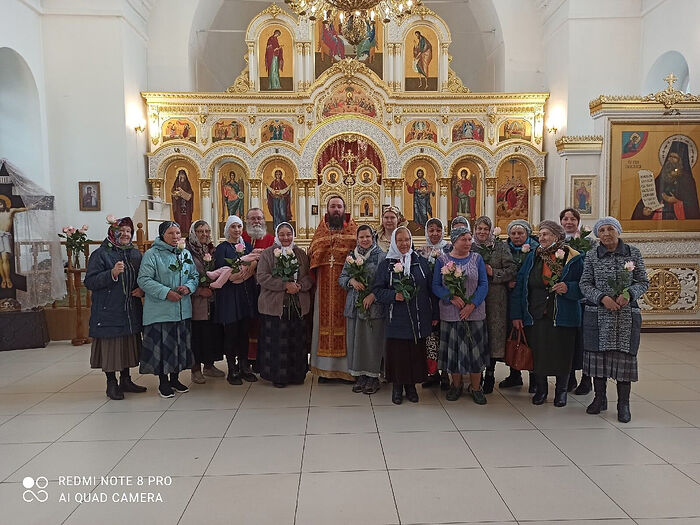 Priest Andrei Zadorozhny with the church parishioners
Priest Andrei Zadorozhny with the church parishioners
—And on the great feasts?
—On the feast of St. Silouan the Athonite (September 24) we have our second patronal feast (smiles). In 2016 there was a large-scale pilgrimage on the occasion of the 150th anniversary of the saint’s birth. The faithful flocked from all over Russia. Then the saint’s skull was brought to his birthplace for the celebrations. It was an all-Russian event that took place through the efforts of Abbess Juliania (Kaleda) [the abbess of the Holy Conception Convent in Moscow.—Trans.], for which we are immensely grateful to her.
—The parish probably has a lot of needs now—the community is small…
—Visiting our church and seeing the beautiful white and gold iconostasis donated to us, people often say, “What a rich church you have!” But in fact, we would appreciate any help. In 2000, if I am not mistaken, the main dome of the church was restored with the help of federal funds. Now we are making side porches, and the front porch needs repair.
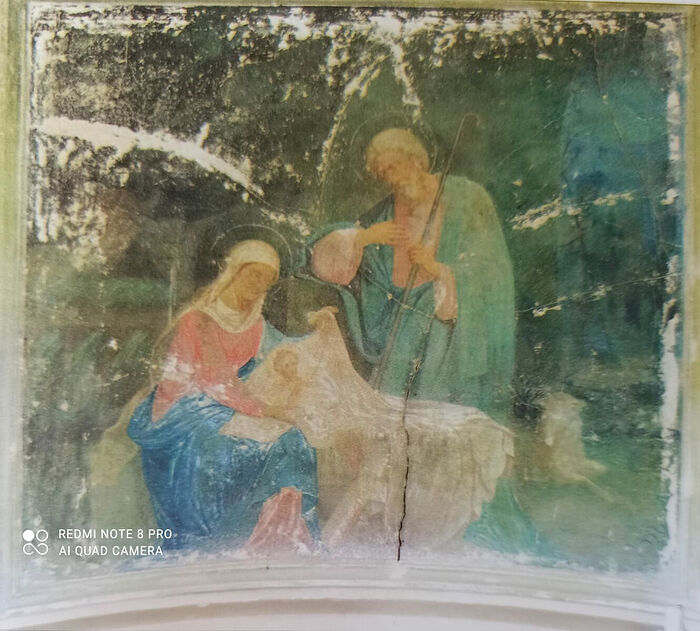 Fresco of the Nativity of Christ
Fresco of the Nativity of Christ
We are also considering restoring the frescoes. Many of them were lost after the church was closed and desecrated, but a fresco of the Nativity of Christ has survived in the narthex and it requires restoration. There are also frescoes inside the church: of Sts. Theodosius of Chernigov and John Chrysostom.
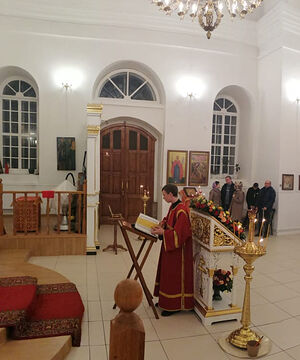 Acolyte Dimitry —Do the faithful from the neighboring villages come to your church now?
Acolyte Dimitry —Do the faithful from the neighboring villages come to your church now?
—As a rule, on the major feasts. For example, whole families from the village of Surki gather for Pascha to have their kulichi (Paschal cakes) blessed.
We don’t have many parishioners, but there are those who treasure this place. One of the residents of our village, whose house stands next to the church, works at the church and sings in the choir. Over time her grandson Dimitry became our parishioner as well. That’s how I got an acolyte. He is currently studying in Lipetsk and cannot always attend services, but I am glad that he is drawn to the Church. He learned how to read in Church Slavonic very quickly and has also learned how to ring bells. Later he taught his grandmother how to ring bells as well (smiles).
I think that a family gives you a spiritual foundation. And if you are drawn to God, the Lord will open the path to you. The same goes for the parish—if there are those who need to continue the work of restoration, the Lord will certainly give them opportunities.


